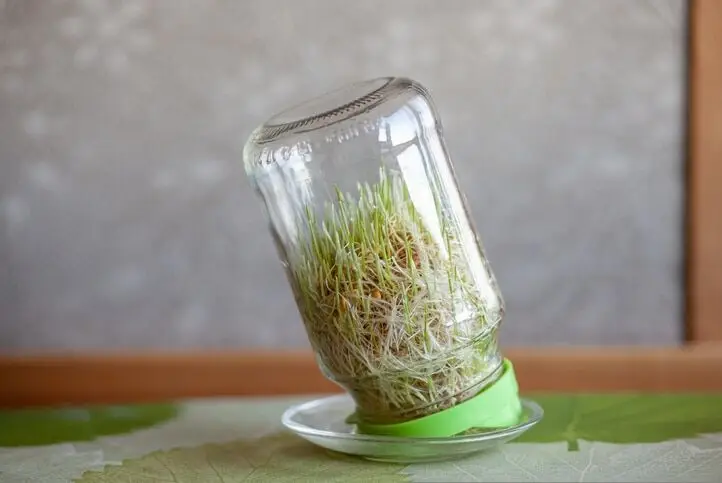Nourishing Aging Bodies: The Power of Nutrition in Combating Common Health Conditions

Introduction
As individuals and as a community we are grappling with lack of nutrition in our food, and we are asking ourselves more and more – how do we rise to the challenge of nourishing aging bodies?
As we age, our bodies undergo various changes, making proper nutrition a vital aspect of maintaining optimal health and combating common health conditions. Older adults are particularly susceptible to conditions such as osteoporosis, cardiovascular disease, cognitive decline, hypertension, type 2 diabetes, and age-related macular degeneration (AMD). By incorporating specific foods into their diets, seniors can help mitigate the risks associated with these conditions. In this article, we explore how targeted nutrition can combat these health concerns in older individuals.
Osteoporosis: Strengthening Bones with Calcium and Vitamin D
Osteoporosis, characterized by reduced bone density, increases the risk of fractures. To support bone health, include calcium and vitamin D-rich foods such as dairy products (milk, yogurt, cheese), leafy greens (kale, spinach), fortified cereals, and fatty fish (salmon, sardines).
Cardiovascular Disease: Nurturing a Healthy Heart
Heart health is of utmost importance in aging. Combat cardiovascular disease by consuming foods low in saturated fats and high in heart-healthy fats like omega-3 fatty acids. Incorporate fatty fish (salmon, mackerel), walnuts, flaxseeds, chia seeds, olive oil, colorful fruits, vegetables, whole grains, and legumes for their fiber content and antioxidants.
Cognitive Decline: Feeding the Brain
Cognitive decline, including memory loss and decreased cognitive function, is a common concern in aging. To support brain health, focus on foods rich in antioxidants and omega-3 fatty acids. Include blueberries, strawberries, leafy greens (spinach, kale), nuts (walnuts, almonds), fatty fish (salmon, trout), and turmeric in the diet.
Hypertension (High Blood Pressure): Regulating Blood Pressure
High blood pressure increases the risk of heart disease and stroke. Manage hypertension by incorporating fruits and vegetables (especially potassium-rich options like bananas, oranges, tomatoes, sweet potatoes), whole grains, lean proteins (poultry, fish), low-fat dairy products, and legumes into the diet.
Type 2 Diabetes: Stabilizing Blood Sugar Levels
Type 2 diabetes is a chronic condition affecting many older adults. Focus on foods that maintain stable blood sugar levels. Choose complex carbohydrates like whole grains, legumes, and vegetables, along with lean proteins (chicken, fish, tofu), healthy fats (avocado, nuts), and high-fiber foods. Avoid sugary beverages and highly processed foods.
Age-Related Macular Degeneration (AMD): Preserving Eye Health
AMD is a leading cause of vision loss in older adults. Nourish your eyes with foods rich in vitamins A, C, and E, zinc, and lutein/zeaxanthin. Include carrots, sweet potatoes, citrus fruits, leafy greens (spinach, kale), nuts, seeds, and omega-3 fatty acid-rich fish to support eye health.
Conclusion
As we age, prioritizing nutrition becomes increasingly crucial for maintaining overall health and combating common health conditions. By incorporating specific foods into their diets, older adults can support bone health, cardiovascular health, cognitive function, blood pressure regulation, blood sugar management, and eye health. It is essential to consult with healthcare professionals, such as registered dietitians, to create personalized dietary plans that consider specific health conditions and individual needs. By nourishing their bodies with targeted nutrition, seniors can embrace aging with vitality and well-being.
Organisation’s that help with nutrition
Here are some organizations in Australia that provide nutrition and dietary help to the elderly and aged care organizations:
- Nutrition Australia (www.nutritionaustralia.org): Nutrition Australia is a non-profit organization that provides nutrition information, resources, and services to promote healthy eating and well-being. They offer resources and guidance on nutrition for older adults and aged care facilities.
- The Dietitians Association of Australia (DAA) (www.daa.asn.au): The DAA is the national association of dietitians in Australia. They have a “Find an Accredited Practising Dietitian” feature on their website, which allows you to search for registered dietitians specializing in aged care and nutrition for the elderly.
- Meals on Wheels Australia (www.mealsonwheels.org.au): Meals on Wheels is a community-based service that delivers nutritious meals to elderly individuals who are unable to prepare their own meals. They ensure that the meals meet the nutritional needs of older adults.
- Australian Government Department of Health (www.health.gov.au): The Australian Government Department of Health provides information and resources on aged care and nutrition. Their website offers guidance on healthy eating for older Australians and provides links to various aged care services and support.
- Eldercare (www.eldercare.net.au): Eldercare is a South Australian aged care provider that focuses on nutrition and meal services for older adults. They offer a range of residential care and home care services, including nutritious meal plans and dietary support.
- Australian Unity (www.australianunity.com.au): Australian Unity is a health and wellness organization that provides aged care services, including nutrition and dietary support. They offer personalized meal plans, nutritional assessments, and advice for seniors in their residential care facilities.
These organizations can provide valuable information, resources, and services related to nutrition and dietary support for the elderly. It’s recommended to visit their websites or contact them directly for more detailed and up-to-date information on their services and programs.
Physical Activities
Physical and mental activities can play a significant role in combatting the conditions described earlier in older adults. Here are some examples:
a) Weight-bearing exercises: Weight-bearing activities like walking, jogging, dancing, and stair climbing help promote bone health, reduce the risk of osteoporosis, and improve overall strength and balance.
b) Strength training: Engaging in strength training exercises, such as lifting weights or using resistance bands, can help maintain and increase muscle mass, enhance bone density, and support cardiovascular health.
c) Aerobic exercises: Participating in aerobic exercises like swimming, cycling, or aerobic classes improves cardiovascular fitness, helps manage blood pressure, and reduces the risk of heart disease.
d) Balance and flexibility exercises: Activities like yoga, tai chi, and balance exercises improve stability, flexibility, and coordination, reducing the risk of falls and related injuries.
e) Physical activities for eye health: Eye exercises that involve focusing, tracking, and peripheral vision stimulation can help maintain eye health and potentially reduce the risk of age-related macular degeneration (AMD). Examples include eye rotations, focusing on near and distant objects, and eye massages.
Mental Activities
a) Cognitive exercises: Engaging in activities that challenge the brain, such as puzzles, crosswords, Sudoku, memory games, and learning new skills, can help maintain cognitive function, improve memory, and potentially reduce the risk of cognitive decline.
b) Reading and learning: Stimulating the mind through reading books, newspapers, or engaging in online courses helps keep the brain active, enhances knowledge, and supports mental well-being.
c) Social interactions: Maintaining an active social life, participating in group activities, joining clubs or community organizations, and spending time with family and friends contribute to mental stimulation, emotional well-being, and reduced feelings of isolation or loneliness.
d) Meditation and mindfulness: Practicing meditation, deep breathing exercises, and mindfulness techniques can help reduce stress, improve focus, and promote overall mental health.
e) Creative pursuits: Engaging in creative activities like painting, writing, playing musical instruments, or crafts fosters self-expression, enhances cognitive abilities, and provides a sense of accomplishment.
It’s important to note that individuals should consult with healthcare professionals, such as physicians and physical therapists, to determine the most suitable activities based on their specific health conditions and capabilities. A personalized approach that combines both physical and mental activities is recommended to maximize the benefits and address individual needs.
Disclaimer
The information provided in this article is for educational and informational purposes only and is not intended as medical advice. It is not a substitute for professional medical advice, diagnosis, or treatment. Always seek the advice of a qualified healthcare provider with any questions you may have regarding a medical condition. The author and publisher of this article are not responsible for any adverse effects or consequences resulting from the use of any suggestions, preparations, or procedures described in this article.



